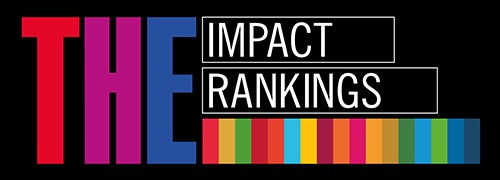.
Dermatoepidemiology
Study Course Description
Course Description Statuss:Approved
Course Description Version:2.00
Study Course Accepted:29.08.2024 11:14:44
| Study Course Information | |||||||||
| Course Code: | SVUEK_144 | LQF level: | Level 6 | ||||||
| Credit Points: | 2.00 | ECTS: | 3.00 | ||||||
| Branch of Science: | Clinical Medicine; Dermatology and Venereology | Target Audience: | Public Health | ||||||
| Study Course Supervisor | |||||||||
| Course Supervisor: | Ilze Jākobsone | ||||||||
| Study Course Implementer | |||||||||
| Structural Unit: | Institute of Public Health | ||||||||
| The Head of Structural Unit: | |||||||||
| Contacts: | Riga, 9 Kronvalda boulevard, svek rsu[pnkts]lv, +371 67338307 rsu[pnkts]lv, +371 67338307 | ||||||||
| Study Course Planning | |||||||||
| Full-Time - Semester No.1 | |||||||||
| Lectures (count) | 2 | Lecture Length (academic hours) | 2 | Total Contact Hours of Lectures | 4 | ||||
| Classes (count) | 14 | Class Length (academic hours) | 2 | Total Contact Hours of Classes | 28 | ||||
| Total Contact Hours | 32 | ||||||||
| Study course description | |||||||||
| Preliminary Knowledge: | Biology, anatomy, histology, biochemistry, parasitology, physiology, epidemiology, microbiology, virology, immunology, pharmacology, infectious and internal diseases. | ||||||||
| Objective: | To demonstrate the variety and diversity of skin and venereal diseases, and their relation to the quality of life, as well as the disputed and changing meaning of these diseases in the society and its impact on an individual’s health. Particular attention will be paid to the aetiology, spread, infection routes and transfer possibilities, as well as skin disease characteristics, immunosuppression, and impact of addictive substances as alcohol and drugs, and the resulting impact on public health. Aesthetic dermatology as an important part of public health. | ||||||||
| Topic Layout (Full-Time) | |||||||||
| No. | Topic | Type of Implementation | Number | Venue | |||||
| 1 | Dermatology. | Lectures | 1.00 | auditorium | |||||
| 2 | Contagious skin disease and infestations. | Classes | 2.00 | auditorium | |||||
| 3 | Chronic dermatosis – their impact on the patient's quality of life, working capacity, life expectancy. | Classes | 2.00 | auditorium | |||||
| 4 | Dermatological viral diseases | Classes | 1.00 | auditorium | |||||
| 5 | Sexually transmisive diseases. Agents, transfer routes, the incubation period, the transmissibility (transmission rate), clinical manifestation, consequences, complications. STI care organisation in Latvia, diagnostic facilities. | Classes | 2.00 | auditorium | |||||
| 6 | STI therapy. The USA, European countries', WHO, IUSTI recommendations, guidelines, their use in Latvia. Antimicrobial resistance in STI cases. | Classes | 1.00 | auditorium | |||||
| 7 | The legislation and regulations governing the STI diagnosis, treatment and monitoring in Latvia. STI supervision models in Europe and in the world. STI registration procedures, contacts, surveys. Procedure103 – objectives, practical use in Latvia, the benefits and shortages. | Lectures | 1.00 | auditorium | |||||
| 8 | STI prevention, the impact on public health. | Classes | 2.00 | auditorium | |||||
| 9 | Non-melanoma tumors, precancerous conditions, benign skin formations. | Classes | 1.00 | auditorium | |||||
| 10 | Aesthetic dermatology: reality and myths, availability, safety and riscs. | Classes | 2.00 | auditorium | |||||
| 11 | Skin protection. | Classes | 1.00 | auditorium | |||||
| Assessment | |||||||||
| Unaided Work: | During the course students acquire additional knowledge independently from resources in the Internet and materials in e-studies. | ||||||||
| Assessment Criteria: | Participation and activity during lectures and classes (50%). The test is passed and the student gets the assessment “pass” if their knowledge, skills and competence correspond to the assessment “almost satisfactory” (4) and above (50%). At the end of the study course, I invite you to fill in the questionnaire and give a constructive opinion on what you think has been successful, as well as to formulate proposals for the improvement of the course. | ||||||||
| Final Examination (Full-Time): | Exam (Written) | ||||||||
| Final Examination (Part-Time): | |||||||||
| Learning Outcomes | |||||||||
| Knowledge: | The student will know the epidemiology of skin and venereal diseases and their role in public health; the student will be able to describe and analyse cases in dermatovenereology; will be able to characterise the spreading of chronic skin conditions, formulate their importance for public health. | ||||||||
| Skills: | The student will know how to draft an action plan for healthcare institutions in cases of skin and venereal diseases; The student will be able to analyse documents intended for the restriction of spreading of venereal diseases. | ||||||||
| Competencies: | The student will be able to analyse epidemiologic data, acquired from the EU, WHO and other important organisations, and will be able to provide with information on epidemiologic situation in the world; the student will be able to analyse use or application of aesthetic dermatology and the importance of achieved results in public health. | ||||||||
| Bibliography | |||||||||
| No. | Reference | ||||||||
| Required Reading | |||||||||
| 1 | Brila A. Infekcijas slimību epidemioloģija. Rīga: Nacionālais apgāds; 2009. | ||||||||
| 2 | Vīksna L. Infekcijas slimības. Rīga: Medicīnas apgāds; 2011. | ||||||||
| 3 | Hartmane I. Psoriāze. Rīga: ( B. i.), 2004. | ||||||||
| 4 | Hartmane I. Pūšļu dermatozes. Rīga; SIA Medicīnas apgāds, 2009. | ||||||||
| 5 | Gūtmane R. Dermatoloģijas bilžu grāmata, Rīga, 2002. | ||||||||
| 6 | Rubins A. Dermatoveneroloģija. Rīga: Latvijas Dermatovenerologu asociācija un Latvijas Dermatoveneroloģijas fonds; 2010. | ||||||||
| Additional Reading | |||||||||
| 1 | Bolognia J. L., Jorizzo J.L., Rapini R. P., eds. Dermatology. 2nd ed. Philadelphia: Mosby, 2008. | ||||||||
| 2 | Wolf K., Johnson R. A. Fitzpatricks color atlas and synopsis of clinical dermatology. 6th ed. The McGraw- Hill Companies, 2009. | ||||||||
| 3 | Fry L. Atlas of bullous diseases. London: Informa Healtcare, 2006. | ||||||||
| 4 | Reitamo S., Luger T. A., Steinhoff M. Textbook of atopic dermatitis. Informa Healtcare, 2008. | ||||||||
| 5 | Hook E.W., Klausner J. D. Current diagnosis and treatment of sexually transmitted diseases illustrated edition. Mc- Graw- Hill Medical, 2009. | ||||||||
| 6 | Dirschka T. Klinikkleifaden Dermatologie. Eksevier, Munchen, 2011. | ||||||||
| 7 | Moll I. Dermatologie. Thieme, Stuttgart, 2010 (ar CD- ROOM). | ||||||||
| 8 | Rochen M. Taschernatlas Dermatologie. Thieme, Stuttgart, 2010. | ||||||||
| 9 | Sterry W. Chekliste Dermatologie. Thieme Stuttgart, 2010. | ||||||||
| 10 | Аковбян В.А., Прохоренков В.И., Соколовский Е.В. Инфекции передаваемые половым путём. Медиасфера, 2010. | ||||||||
| 11 | Дмитриев Г.А., Доля О.В., Василенко Т.И. Сифилис: феномен, эволюция, новации. Медиасфера, 2010. | ||||||||
| 12 | Адаскевич В.П., Козин В.М. Кожные и венерические болезни. Медиасфера, 2009. | ||||||||
| 13 | Скрипкин Ю.К., Кубанова А.А., Акимов В.Г. Кожные и венерические болезни. Медиасфера, 2009. | ||||||||
| 14 | Вулф К., Джонсон Р., Сюрмонд Д. Дерматолия. Москва. 2007., с 1248. | ||||||||
| 15 | Vīksna L. Ceļotāja veselības rokasgrāmata. Rīga: Nacionālais apgāds; 2002. | ||||||||
| 16 | Brunette G W, Kozarsky P E, Magill A J, Shlim D R. CDC Health Information for international travel 2010. Philadelphia: Mosby. 2009. | ||||||||
| 17 | Hartmane I. u.c. Sifilisa ārstēšana un profilakse. Metodiskie ieteikumi. SIA Nacionālais apgāds, Rīga, 2004. | ||||||||
| 18 | Hartmane I., Dērveniece A., Mikažāns I. Ļaundabīgo limfoproliferatīvo audzēju radīto ādas bijājumu klasifikācija, klīniskās pazīmes un diagnostikas principi. Metodiskie ieteikumi. RSU tipogrāfija, 2004. | ||||||||
| 19 | Hartmane I. u.c. Diagnostiskās un ārstēšanas tehnoloģijas dermatoloģijā. Metodiskie Ančupāne I., Hartmane I., Kolontaja I., Mikažāns I. Atopiskais dermatīts. LU Akadēmiskais apgāds, 2005. | ||||||||
| Other Information Sources | |||||||||
| 1 | http:/ arcderm.ama-assn.org | ||||||||
| 2 | www. emedicine.com/derm/inbox.shtml | ||||||||
| 3 | www.medscape.com | ||||||||


